Project 1: Determining the role of amino acid metabolism in neurological disorders
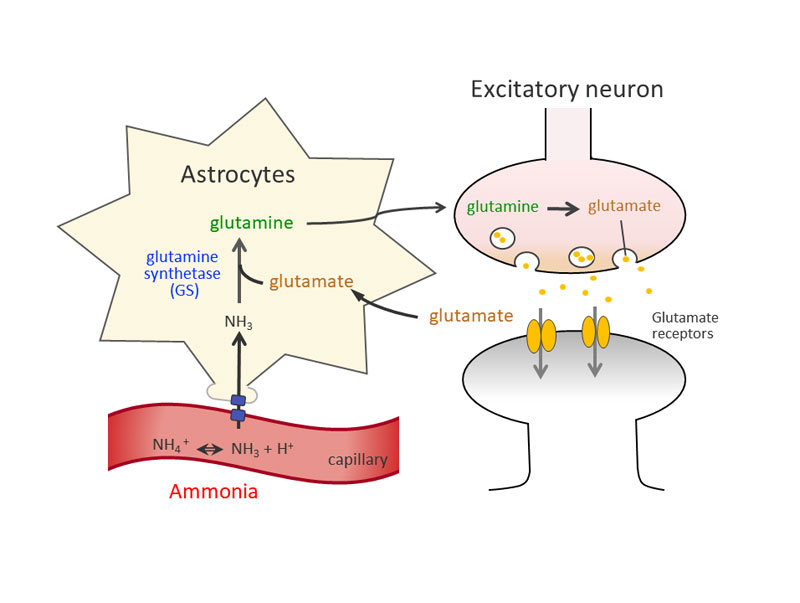 Schematic representation of the glutamate-glutamine cycle in the brain
Schematic representation of the glutamate-glutamine cycle in the brain
Amino acid is one of the three major nutrients which has various biological functions in the human body. The amino acid glutamate is known as the major excitatory neurotransmitter in the central nerve system and plays an important role in learning and memory. However, excess extracellular glutamate leads to neurotoxicity, and these are thought as the cause of neurodegeneration and neuronal death. We are studying the mechanisms how astrocytes, the major non-neuronal cells in the brain, take up glutamate and metabolize it using various biochemical techniques and the mouse model of neurological disorders.
Project 2: Identifying the link between periodontitis and mental illness
Periodontitis has been reported to be linked with other diseases in the body. Interestingly, recent studies showed a positive association between periodontitis and mental disorders, including dementia, anxiety and depression, revealing that oral health is an important component of mental health. We are currently examining the effect of periodontal pathogens on the brain using a mouse model of periodontitis and chronic inflammatory diseases. We use immunohistochemical, biochemical and behavioral approaches to address our questions.
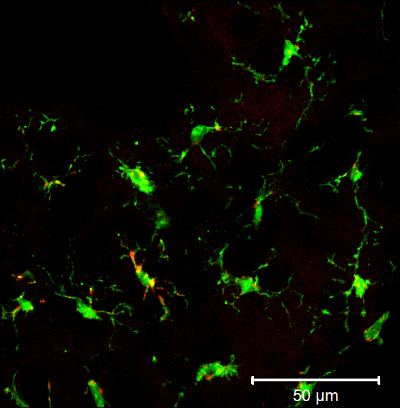 Immune cells (green) in the mouse brain and a marker of active phagocytosis
CD68 (red).
Immune cells (green) in the mouse brain and a marker of active phagocytosis
CD68 (red).
Project 3: Examining the physiological role of kainite receptors
Glutamate is the major excitatory neurotransmitter, which involves in wide range of spatial and temporal regulation in the brain including cognitive function. One of ionotropic glutamate receptors, kainate receptors are found to regulate synaptic function in the brain. They are known to be associated with various psychiatric disorders. However, their clinical significance and molecular characteristics remain unclear. We are currently examining the physiological role of kainate receptors using genetically engineered mice and various neuroscientific approaches.
 Elevated plus maze test studying anxiety in mouse
Elevated plus maze test studying anxiety in mouse
Project 4: Elucidating the sensing mechanisms in the gut using in vivo imaging technique
Fine balance between appetite and termination of ingestion is essential for maintaining body fluid homeostasis and energy balance. Emerging evidence suggests that communication between the gut and brain serves as a critical component for appetite induction and satiation. Nevertheless, it remains unclear how the visceral sensory neurons detect gut osmolality changes or nutrients. To address this, we exploit in vivo calcium imaging from vagal ganglia and dorsal root ganglia that carry the majority of gut sensory information from vagus nerve and spinal nerve, respectively. We aim to elucidate the osmolality and nutrients sensing mechanisms of the gut using this imaging technique.
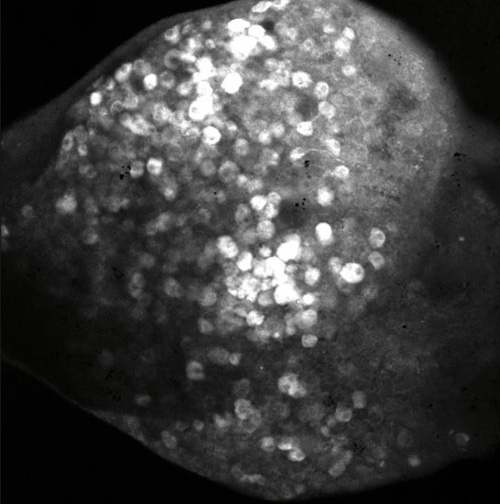 Image of in vivo calcium imaging in mouse vagal sensory ganglion
Image of in vivo calcium imaging in mouse vagal sensory ganglion
Project 5: Discovery of novel therapeutic targets in oral cancer
Oral cancer is characterized by poor prognosis and a low survival rate. Reprogrammed metabolism is one of the hallmarks of cancer cells, which allows cells to rapidly grow and divide. We are especially focused on the lipid metabolism and exploring the molecules which can be the new target of anti-cancer agent
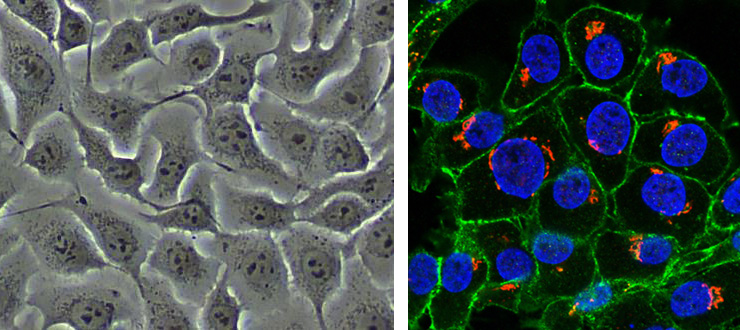 Morphology of oral cancer cells
Morphology of oral cancer cells
Project 6: Identifying the role of inhibitory neurotransmitter in the peripheral tissue homeostasis
The major inhibitory neurotransmitter GABA (gamma aminobutyric acid) is produced in brain cells from glutamate and act to slow nerve signals in the brain. The inhibitory effect of GABA is mediated through the GABA receptors and interestingly, these receptors are found to express not only in brain but also in various peripheral tissue including lung, liver, kidney and heart. However, the role of GABA receptors in peripheral tissues remain unclear. In addition, the food supplement version of GABA is widely available in the store, however, the mechanism of action behind these products is unknown. Since GABA is unable to cross the blood-brain barrier in general, we are currently studying the role of peripheral GABA receptors and possible effects of GABA food supplements in these tissues.
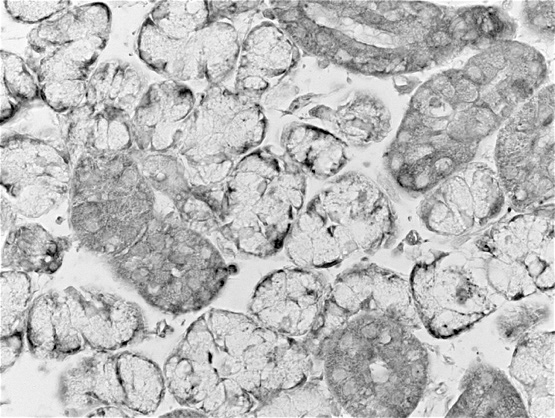 Expression of GABAB receptor in the submandibular gland
Expression of GABAB receptor in the submandibular gland